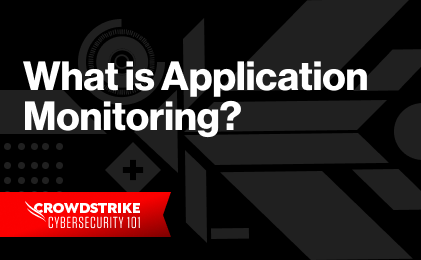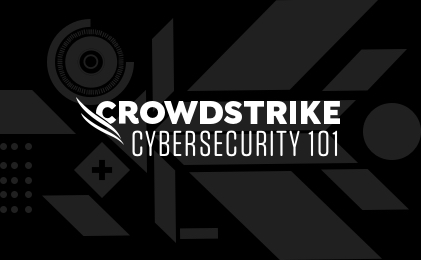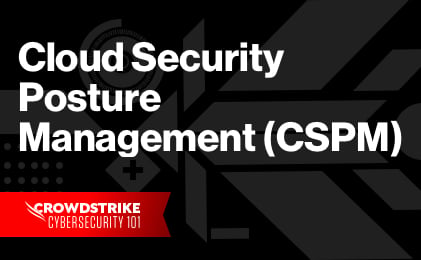What is application security posture management (ASPM)?
Application security posture management (ASPM) is the holistic process of evaluating, managing, and enhancing the security stance of an organization’s custom applications. It ensures applications adhere to security standards, resist cyber threats, and remain compliant.
ASPM tools identify vulnerabilities, assess risks, and prioritize mitigations, enabling organizations to safeguard sensitive data, prevent breaches, and ensure compliance with industry regulations.
Why is ASPM important?
Many businesses rely on development teams to innovate quickly so they can deliver better products, services, and experiences through applications. However, the widespread reliance on applications requires vigilant measures to prevent potential exploitation, data breaches, or compliance violations.
That’s why application security posture management (ASPM) has emerged as a vital practice, ensuring applications meet stringent security standards and identifying vulnerabilities. Recognizing its importance, Gartner predicts that by 2026, over 40% of organizations developing proprietary applications will adopt ASPM to swiftly identify and resolve security issues. Let’s delve deeper into ASPM, exploring its benefits and essential features.
ASPM is instrumental to an organization’s DevOps life cycle due to its ability to proactively identify and manage application vulnerabilities. In the dynamic landscape of software development where new threats constantly emerge, ASPM ensures that applications are rigorously assessed, allowing for swift identification, triage, and prioritization of potential risks throughout the software development life cycle.
Ultimately, ASPM empowers companies to build robust, secure applications, ensuring a proactive and sustainable approach to application security management.

2024 CrowdStrike Global Threat Report
The 2024 Global Threat Report unveils an alarming rise in covert activity and a cyber threat landscape dominated by stealth. Data theft, cloud breaches, and malware-free attacks are on the rise. Read about how adversaries continue to adapt despite advancements in detection technology.
Download NowWhere does ASPM fit in cybersecurity?
ASPM is a part of an organization’s overall security strategy focused on the specialized practice of securing applications. While network security, cloud security, and other security focus areas are vital, securing applications is equally important. Many cyberattacks target vulnerabilities in applications, making ASPM a critical component of an organization’s security practices. ASPM also helps support an organization’s incident response protocols by providing essential insights that show what sensitive data — such as personally identifiable information (PII), protected health information (PHI), information subject to Payment Card Industry (PCI) regulations, and intellectual property — is at risk and where it lives to facilitate effective remediation.
ASPM provides visibility into the unique variables and configurations of applications running in production. In addition to filling a huge gap in visibility, ASPM solutions correlate application security testing signals and findings across disparate tools and teams, enabling security teams to detect, triage, and prioritize the greatest threats to the organization’s business-critical applications.
Core business benefits
The many business benefits of ASPM underscore its need in modern cybersecurity strategies. The main benefits include:
Application visibility
- Extends visibility beyond cloud infrastructure – ASPM brings visibility into application architecture, as it maps every service, database, API, and dependency in an application. For security, development, and operations teams, this creates a source of truth and eliminates guesswork and manual exercises.
Application Inventory
- Creates an accurate system of record – ASPM provides a code-accurate and up-to-date inventory or software bill of materials (SBOM) that identifies every application service, library, configuration file, and environment variable.
Application vulnerability triage and prioritization
- Enhances application security – By employing ASPM solutions, organizations can systematically identify and mitigate vulnerabilities, ensuring not only enhanced security but the production of more secure, high-quality code.
- Establishes proactive risk management – With real-time monitoring and automated security checks, ASPM ensures that potential security gaps are promptly addressed, leading to a robust and resilient defense against cyber threats.
Application misconfiguration management
- Continuously secures application architecture – ASPM verifies and measures application security controls by enabling standardization and enforcement of architectural governance policies.
Application data privacy and compliance
- Protects sensitive data – ASPM plays a pivotal role in ensuring application data privacy. By identifying the databases that contain PII, PHI, PCI, or other important data, ASPM can assess vulnerabilities and threats based on proximity to sensitive data.
- Helps ensure compliance – ASPM helps organizations ensure compliance with regulations such as GDPR, HIPAA, and CCPA. Automated compliance checks coupled with continuous monitoring help ensure that applications adhere to legal frameworks.
Application resilience
- Builds resilience – By using ASPM to identify vulnerabilities and weaknesses, organizations can implement targeted security measures that make their applications more robust and equipped to withstand cyberattacks, ensuring uninterrupted services for users.
- Creates sustainable security practices – Integrating security practices into the development life cycle enables organizations to establish a culture of security awareness. Developers gain insights into secure coding practices, leading to the creation of inherently secure applications. This shift toward sustainable security practices ensures that applications remain resilient in the face of an ever-changing security landscape.

2023 Cloud Risk Report
Download this new report to learn about the most prevalent cloud security threats from 2023 to better protect from them in 2024.
Download NowCritical ASPM Capabilities
There are nine critical capabilities ASPM solutions should include to help organizations elevate their application security:
Up-to-date inventory
A robust ASPM solution automatically catalogs and maintains an up-to-date inventory of an organization’s cloud applications, including their architecture dependencies (such as services, APIs, data flows, third-party services, and libraries). These elements are indexed, baselined, and stored, providing a trusted foundation for risk analysis, security posture insights, and reporting.
Contextual insights
An ASPM solution should provide adequate context and metadata that helps teams understand how threats to applications affect the business. This inherent business context serves as a crucial guide that enables teams to prioritize risks and effectively manage fixes. Rather than relying solely on metadata and context from static sources like cloud infrastructure, operating systems (OSs), networks, and containers, a high-quality ASPM solution should maintain complete context of business logic. This dynamic approach ensures that security efforts are always aligned with the current state of the business, providing invaluable insights for strategic decision-making and proactive risk management.
Data awareness
ASPM solutions must be able to identify sensitive data in an application. This functionality empowers teams to prioritize risks by assessing the potential impact or exploitation of specific types of business data, including PII, PHI, and information subject to PCI regulations. Additionally, ASPM solutions must discover and map data flows throughout an organization’s applications, services, and APIs. Understanding how data moves within applications and across systems is essential for identifying potential points of data leakage or unauthorized access.
Drift awareness
In the context of application security, drift occurs when unexpected business risks emerge due to alterations in application code or configuration. ASPM plays a pivotal role in managing drift by establishing a baseline and implementing version control for the application architecture. This ensures teams can detect when dependencies are introduced, modified, or removed. Detecting unauthorized or unexpected changes helps ensure that applications remain secure over time.
Risk-based scoring
ASPM tools should provide a robust framework for assessing business risks associated with application vulnerabilities. This includes assigning risk scores based on potential business impact, allowing organizations to focus on addressing the most critical security issues first.
Unified threat ingestion
ASPM solutions should integrate with databases of Common Vulnerabilities and Exposures (CVEs). By leveraging threat intelligence feeds, ASPM tools can provide real-time analysis across all threats and attack surfaces so risks can be identified and prioritized.
Policy enforcement
ASPM should empower developers to build secure applications by design. Security teams should be responsible for defining the policies and aligning those policies with industry standards, regulatory requirements, and best practices. Having these guardrails will help ensure applications adhere to these policies to maintain a consistent and compliant security posture.
Automation
ASPM solutions should seamlessly integrate into DevSecOps workflows. Automation is key here, ensuring that security checks are an integral part of the development pipeline. This integration enhances collaboration between development, security, and operations teams, fostering a streamlined and optimized workflow throughout the development life cycle.
Easy deployment and scaling
The ideal ASPM tool should be easy to deploy, configure, and manage so that teams can ramp up quickly and minimize the time and resources required to maintain the solution. Scalability is also crucial, as it allows organizations to readily expand ASPM across more applications as needed. A user-friendly interface with easy-to-understand dashboards will help organizations adopt ASPM and use it effectively to manage risk.
ASPM with CrowdStrike
At CrowdStrike, we provide the most complete cloud security platform, from code-to-runtime. With the addition of Bionic ASPM, we deliver unprecedented application visibility and real-time risk assessment. Through the power of a unified platform, customers experience:
- Industry-leading application visibility: Organizations can mitigate risk by discovering and mapping all application services, databases, third parties, APIs and data flows across every cloud service provider with always-up-to-date agentless visibility, including a dynamic software bill of materials (SBOM) for compliance and detecting supply chain pollution.
- Prioritized application risks in production: Customers can continuously identify and prioritize vulnerabilities based on potential impact and business criticality with tight integration into CI/CD pipelines to proactively close security gaps. This enables teams to filter through the noise of static vulnerability alerts and streamline their DevSec programs to find a critical balance between DevSecOps.
- Complete visibility for serverless infrastructure: With vulnerability scanning for serverless infrastructure, such as Azure Functions and AWS Lambda, organizations can reduce their overall cloud risk.
Learn More
Learn more about our Cloud Security products CrowdStrike Cloud Security


